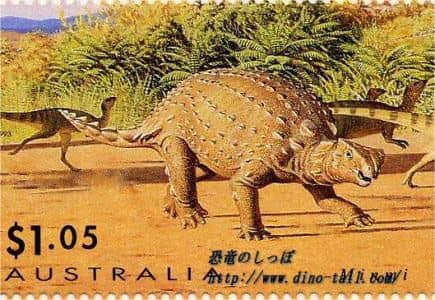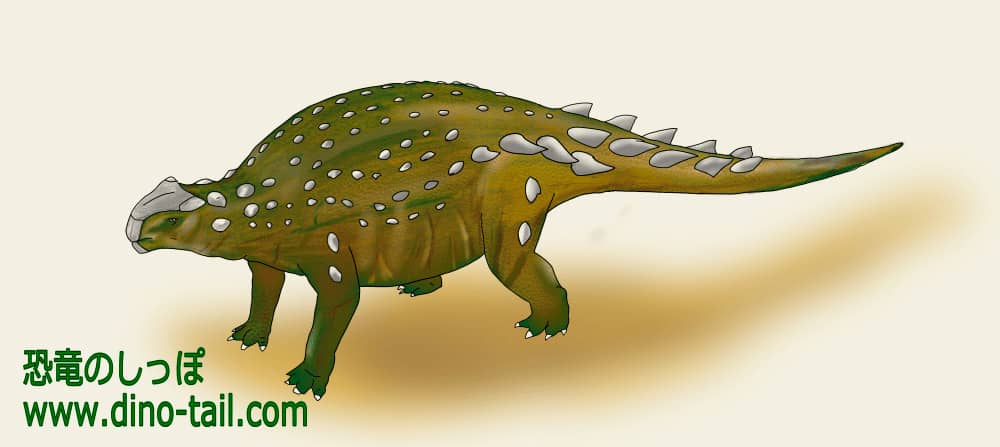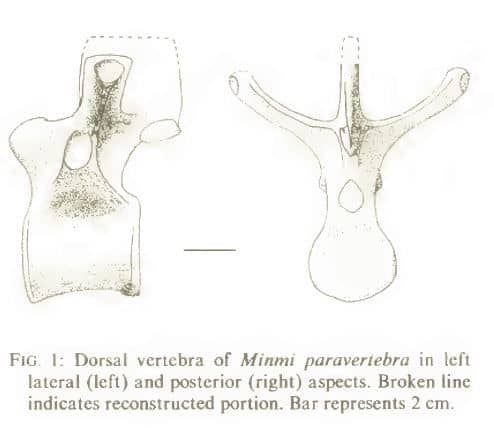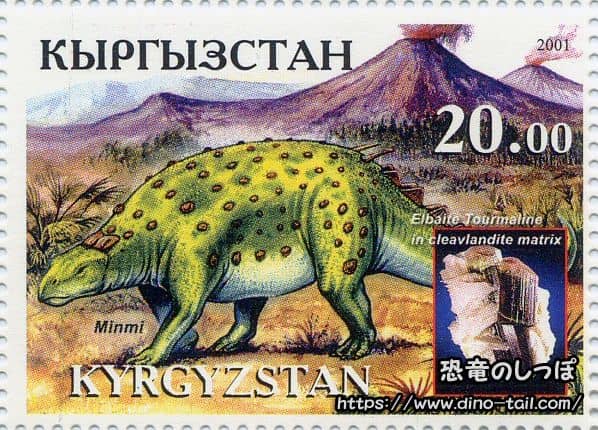About Minmi
| Scientific Name (Genus) | Minmi |
| Meaning of Name |
Minmi (a place name in Australia)
Minmi (place name) |
| Classification | Ornithischia, Thyreophora (Ankylosauria) |
| Total Length | Approx. 2 - 3m |
| Diet | Herbivorous |
| Period | Early Cretaceous (approx. 119-113 million years ago) |
| Species | Minmi paravertebra |
| Year of Paper Publication | 1980 |
| Genus Name Publication |
An ankylosaur (Ornithischia: Reptilia) from the Lower Cretaceous of southern Queensland.
Memoirs of the Queensland Museum. 20. 65–75. by Molnar, R.E. 1980. |
Minmi is a mysterious, primitive ankylosaur discovered in Australia. For many years, it was known as an exceptionally well-preserved dinosaur, but recent research has revealed that its appearance was actually a confusion of two different dinosaurs.
The First Dinosaur: The Real "Minmi"

The first dinosaur to be named "Minmi" was based on a very fragmentary fossil discovered in Queensland in 1964. This fossil (the holotype specimen) included parts of the spine, ribs, and a hind limb.
Its most distinctive feature, which also gave it the species name "paravertebra," is a special bony plate (paravertebrae) that runs along the side of the spine . Currently, this is almost the only feature we know for sure about the "real Minmi." Since no skull has been found, its facial features and the overall appearance of its armor remain a mystery.
The Second Dinosaur: The Amazing Fossil "Kunbarrasaurus"
In 1989, a miraculous ankylosaur fossil was discovered in Australia, with a nearly complete skeleton from head to tail and its entire body armor preserved in three dimensions. Initially, it was thought to be a "complete specimen of Minmi," and all illustrations of Minmi in encyclopedias were based on this specimen.
However, in 2015, a detailed re-examination revealed that this amazing specimen was a completely different species from Minmi, and it was given the new scientific name Kunbarrasaurus ieversi, which means "shield" in the language of the local Aboriginal people of Australia.
The Amazing Features of Kunbarrasaurus
The Kunbarrasaurus fossil was truly a prehistoric time capsule.
- The skull was preserved in almost perfect condition, and CT scans revealed the structure of the brain, inner ear, and even the complex nasal passages.
- Not only the abdominal armor but also small bones that protected the throat and bony eyelids (palpebral bones) were found.
- Even more surprisingly, the contents of its "last meal," consisting of ferns, seeds, and fruits, were discovered where its stomach would have been.

*Note: Most reconstructions and skeletons known as "Minmi" are actually of Kunbarrasaurus.
Discovery and Description

Source: An ankylosaur (Ornithischia: Reptilia) from the Lower Cretaceous of southern Queensland.
Memoirs of the Queensland Museum. 20. 65–75.
by Molnar, R.E. 1980.
In 1964, the Queensland Museum found a partial ankylosaur fossil near Minmi Crossing, 1 km south of Mack Gulley in northeastern Australia. In 1980, Ralph E. Molnar, an expert in mammalogy and paleontology, described the new genus and species Minmi paravertebra.
The holotype specimen, QM F10329, was excavated from the Bungil Formation in Australia. It preserved eleven dorsal vertebrae, ribs, a right hind limb, and plates of the belly armor.
Furthermore, in 1989, a well-preserved specimen including the skull (specimen number QM F1801) was discovered. Ecological reconstructions in encyclopedias were based on this specimen, but in 2015 it was reclassified as a separate genus, "Kunbarrasaurus."
Minmi Stamp & Fossil Gallery


